14 Valentine’s Day Candies with the Lowest Quality Ingredients
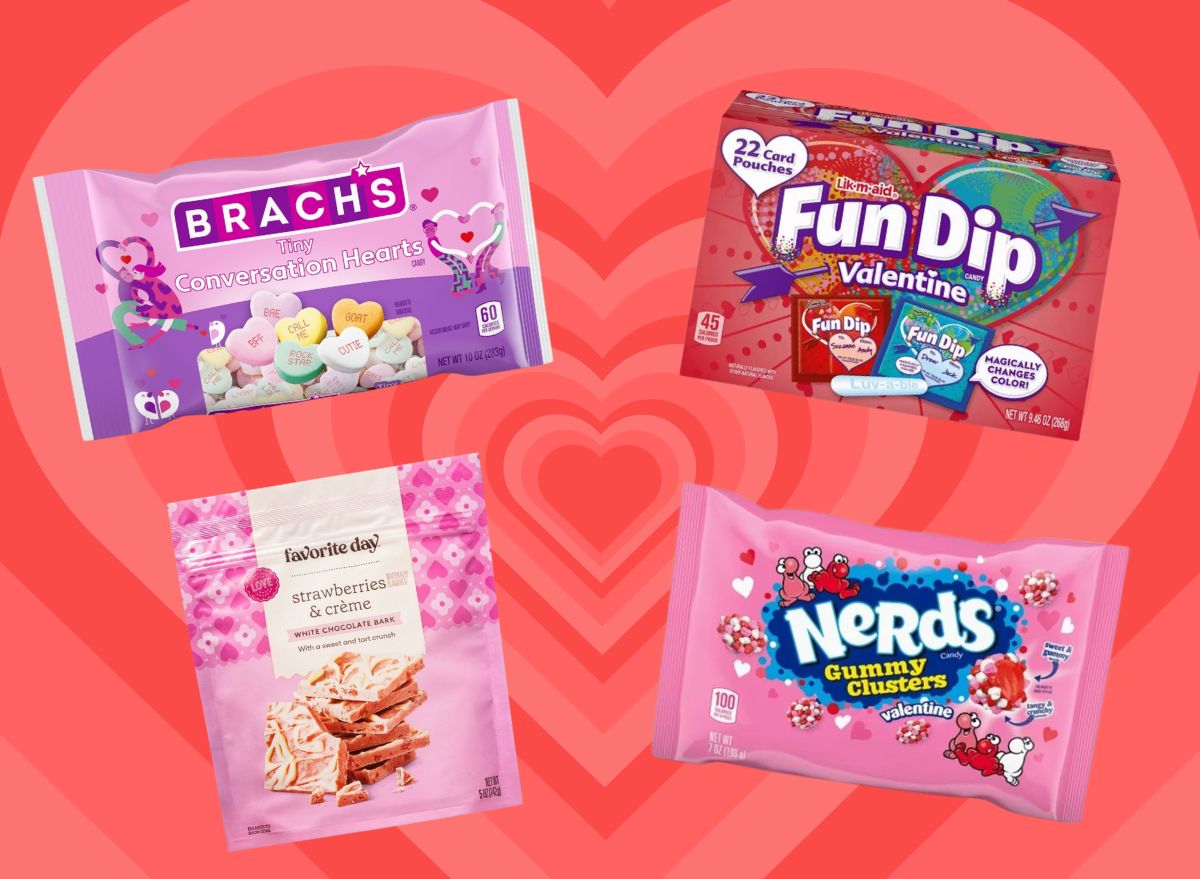
Whether you spend your Valentine’s Day with a romantic partner, schmoozing with your gal pals, or on your couch watching TV, you’re bound to be perusing the grocery aisles during this annual candy extravaganza. And even if you’re a Valentine’s Day cynic, we can all agree that the candy is the best part. According to Capital One’s shopping research, over 137 million Americans shop for this holiday, with 57% of consumers spending more money on candy than any other type of Valentine’s gift.
We don’t want to be a downer on your Valentine’s celebrations, but since it’s our job to ensure that you’re spreading the love to your health, too, we’ve done our research on which candies you should probably leave on the shelf this season. Of course, we know that candy is never really a healthy food, and there’s no candy you should be eating all the time if you’re concerned about your health. But some are still better than others when it comes to nutrition.
Ingredients like red dye 40—which abound across this red-and-pink holiday—can potentially cause adverse side effects like hyperactivity in children, and certain studies suggest that benzene, an ingredient found in red dye 40, may hold carcinogenic properties. But let’s be real, we’re not going to be checking every label, especially not if we have to supply our child’s entire class with Valentine’s surprises. We’ve gone ahead and done the hard work for you, picking out some popular Valentine’s Day candies that should really stay out of your pantry—and your body.
That said, we want to note that eating these candies in moderation won’t kill you. Don’t feel guilty about candy this February, but instead remember that it’s all about moderation and portion control. Portion control is a main factor in weight management, and eating sweets in moderation can help you regulate other health factors such as blood sugar.
As you are perusing the Valentine’s Day candy aisle and wondering which you should avoid tossing in your cart, check out our roundup of the 14 options that we think are made with the lowest quality ingredients. Read on, and next, check out 15 Valentine’s Day Candies—Ranked by Sugar Content.
Starburst Pops
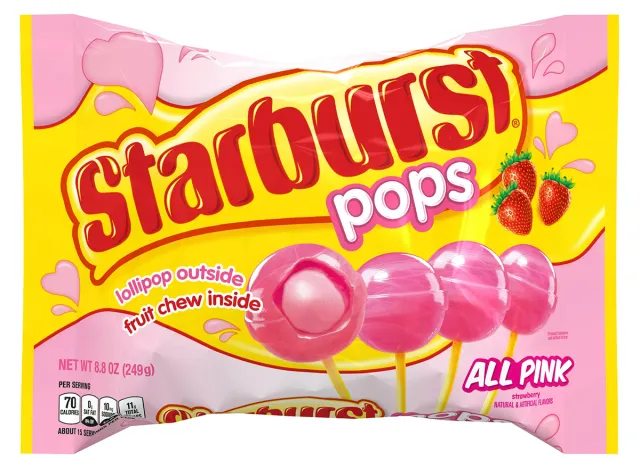
These Starburst Pops are hard on the outside, chewy on the inside, and provide a whopping 11 grams of added sugar per pop. It’s important to note that added sugars are vastly different from natural sugars (like the sugars found in fruits and dairy milk) in terms of nutrition, and overconsumption of added sugars is linked to a slew of health concerns, such as cardiovascular disease.
Brach’s Valentine’s Tiny Conversation Hearts
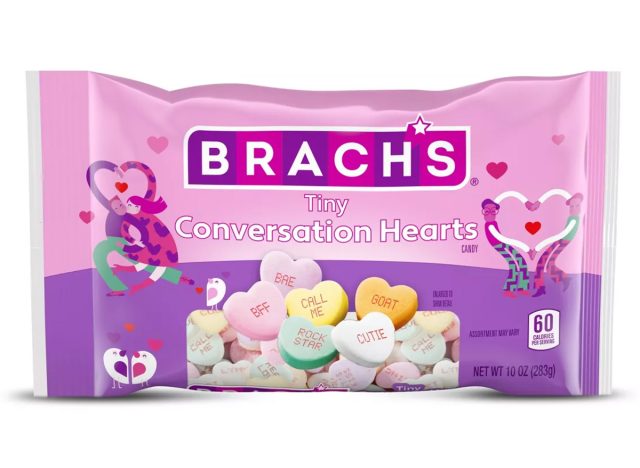
These little candy hearts, although touted as a Valentine’s staple, are loaded with artificial flavorings and colors (seven to be exact). Yellow Lake 5, specifically, has been shown to produce levels of toxicity in non-human specimens. Although more research needs to be conducted, avoiding Yellow 5—and other artificial dyes—may be wise until research becomes more conclusive.
Valentine’s Fun Dip
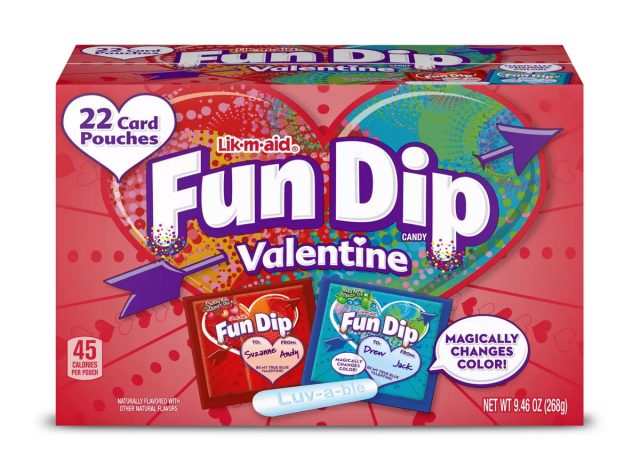
Although perhaps lower in calories than other candies, this one is a bit of a no-brainer. A favorite amongst kids, this candy is nothing but a combination of dextrose and maltodextrin—sugars derived from modified corn—as well as a slew of artificial colors. As these are a recipe for hyperactivity, it’s best to avoid Fun Dip when considering your child’s classroom Valentine’s treats.
Swedish Fish Valentines Gummy Hearts
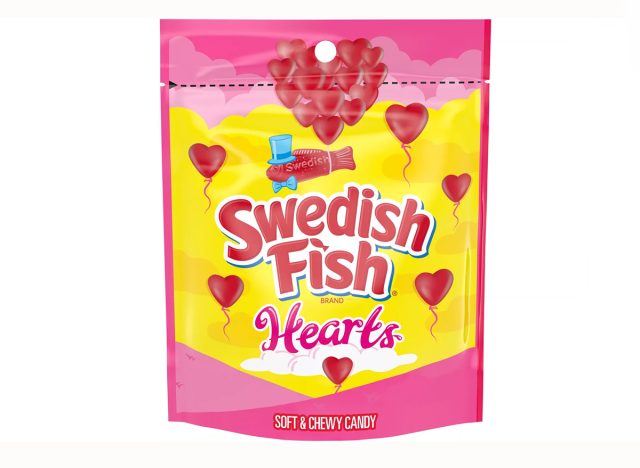
That’s right—24 grams of sugar per serving. Not only are Swedish fish (no matter their shape) incredibly high in added sugars, but they also contain mineral oil, which may not be suitable for some consumers. These chewy candies may also end up being stuck in your teeth, which isn’t a great thing if you are focused on supporting your dental health. Don’t be fooled into thinking these are a good choice just because they’re fat-free.
Albanese Sugar Free Gummy Bears
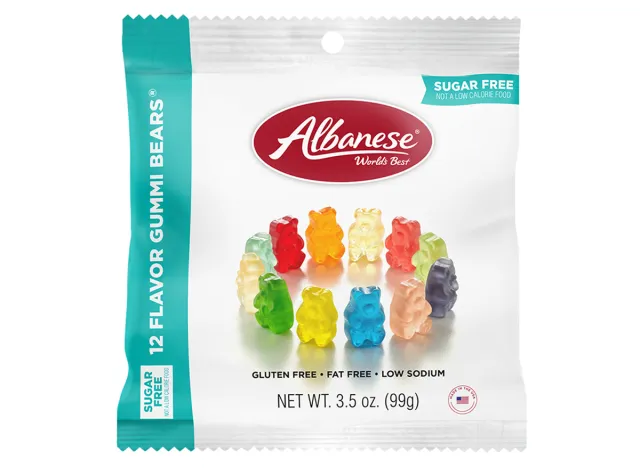
Once again, you may see sugar-free, gluten-free, fat-free, and low sodium, and think these must be a healthier option. Not so. One of the first things you see on the Albanese manufacturer’s website is a warning that “consumption may cause stomach discomfort and/or laxative effect.” This is due to the inclusion of artificial sugar that can lead to gastrointestinal concerns, especially for more sensitive consumers. So, if you overindulge in these little bears, you may not see a spike in blood sugar, but you may notice a more…unpleasant sensation.
Russell Stover Chocolate Heart Boxes
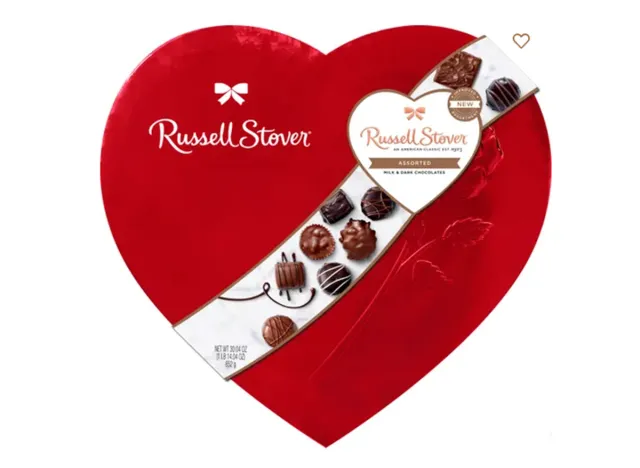
Russell Stover produces some of the most well-known chocolate heart boxes in the country and includes the much-loved Whitman’s Sampler line, as well. The reason we’ve ranked this chocolate company amongst the worst contenders is that their chocolate simply isn’t fair trade. Therefore, Russell Stover is under no compulsion to ethically source their cocoa. Although the company did launch a fair trade line called “Joy Bites” in 2021, their Valentine’s Day boxes are sourced from unknown farms that may not be environmentally sustainable or pay their workers livable wages.
Lindt Lindor Strawberries & Cream White Chocolate Truffles
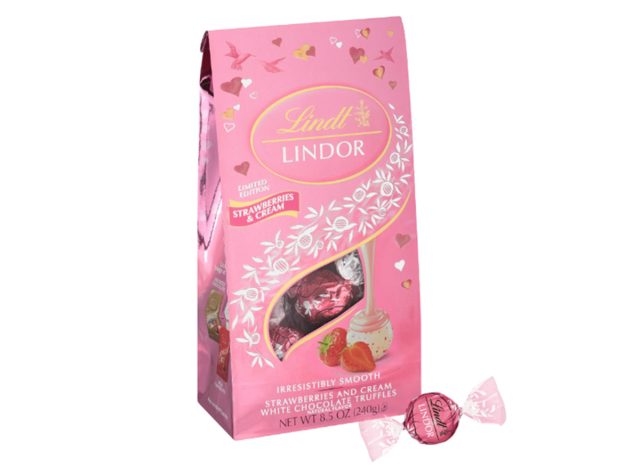
Lindt chocolate has a smooth taste and a higher price point, making it appear to possibly be one of the “better” choices. But we’ve added these truffles to our low-quality ingredient list due to its inclusion of palm kernel oil. While not necessarily unhealthier than other oils, palm oil is one of the causes of deforestation across Asia, Africa, and Latin America. And what’s most frightening is palm oil’s ubiquitousness. According to the World Wildlife Fund, “more than half of all packaged products Americans consume contain palm oil—it’s found in lipstick, soaps, detergents and even ice cream.”
Reese’s Hearts & Miniatures
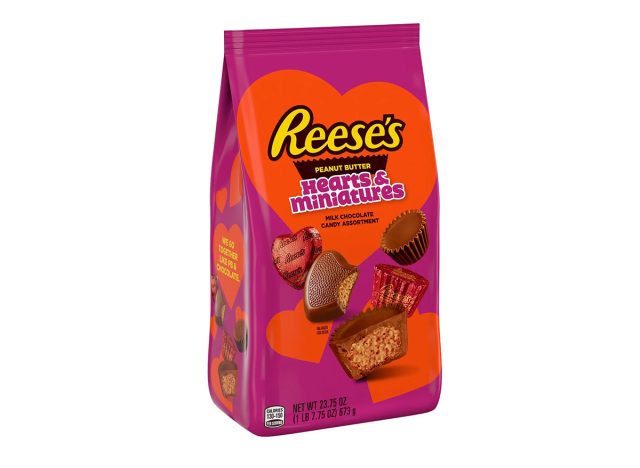
Unlike many gummy or hard candies found around the holiday, Reese’s Hearts & Miniatures include 4.5 grams of saturated fat. The American Heart Association warns of the risks associated with excess saturated fat intake, including heart disease and even stroke. Try to limit your saturated fats, consuming below 13 grams a day for optimal health.
Palmer Cuddly Cuties Chocolate
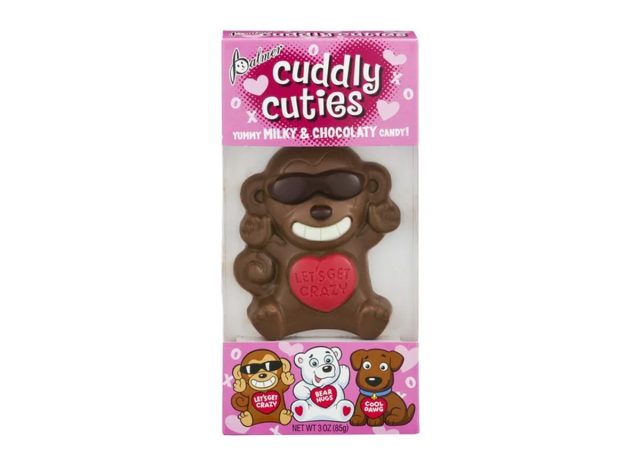
Although perhaps cute for the little ones, these chocolate animals are filled with saturated fats and added sugars as well as hydrogenated palm oil. Cocoa is mentioned fourth on the list of ingredients, so really you’re eating mass amounts of sugar and palm oil without the natural nutrients found in chocolate. Frankly, you’re better off staying clear of these “cuddly” chocolates and going instead for some antioxidant-rich dark or semi-dark chocolates.
Nerds Valentine’s Day Gummy Clusters
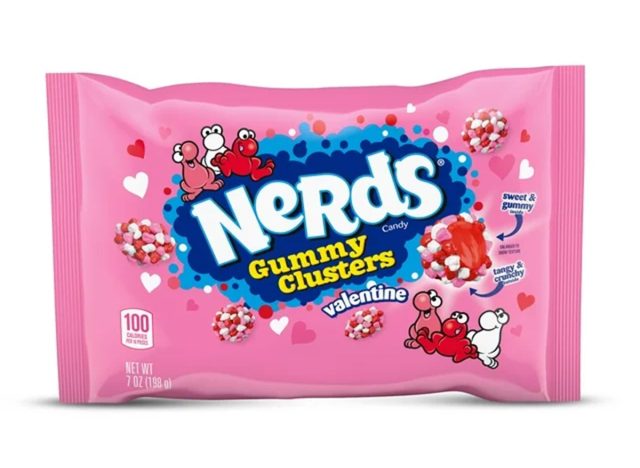
We want to point out that certain gummy products, such as Nerds Clusters, include gelatin to create that traditional gummy consistency. While gelatin isn’t exactly bad for you, these candies aren’t suitable for vegans or certain vegetarians. Gelatin is, after all, made from animal tendons, ligaments, and connective tissues. So, if you’re wary of gelatin, we recommend avoiding it and finding gummies made with substitutes. And 21 grams of added sugar per serving is also a big red flag when it comes to your health.
Hershey’s Giant Milk Chocolate Kiss
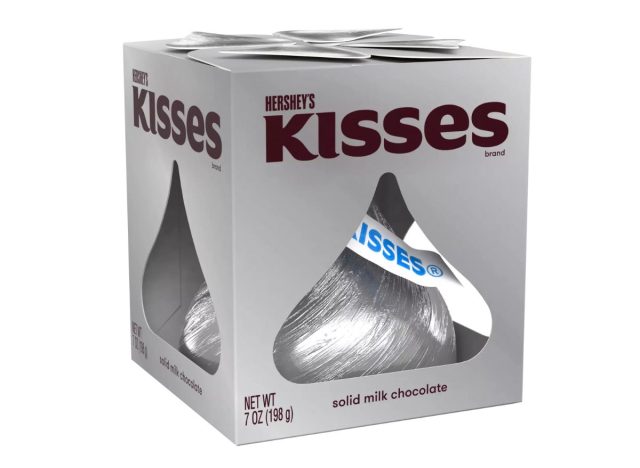
Hershey’s kisses are a Valentine’s staple, but the company has upped the ante with their giant Hershey’s kiss. Although most of us probably aren’t sitting down to eat the entire thing in one sitting, having so much chocolate available at one time may not be great in terms of portion control. Controlling your portions is one of the best ways to manage both your weight and health, as being given large portions of food often increases consumption. This is known as PSE, or the portion size effect. So, it may be better to have just a few small kisses in front of you at a time.
Favorite Day Strawberry Cotton Candy
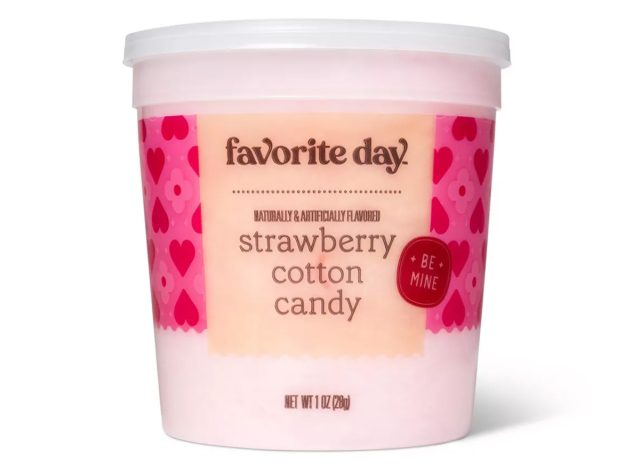
Although it’s ever-so-light and dissolves right in your mouth, cotton candy is nothing but sugar and, well, powdered sugar. With the addition of Red 40 and “natural and artificial flavors,” this cotton candy is probably one of the worst options on our list. And, although artificial flavors are not necessarily bad for you, there’s no way of telling what’s in this cotton candy—and there’s also no definition for the “natural” flavors, either. We think it’s best to simply steer clear.
Haribo Sweet and Sour Hearts
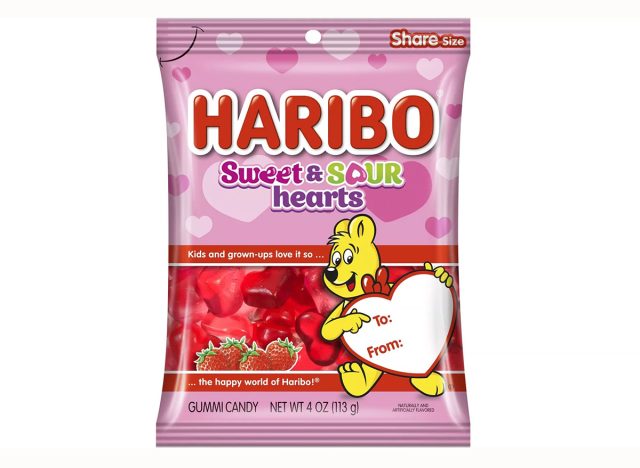
These sweet and sour gummies are loaded with glucose syrup for a sickeningly sweet taste. Although the body doesn’t distinguish between traditional sugar and glucose syrup, the latter does contain nearly four times the number of calories and carbohydrates than sugar, and too much added sugar—no matter its form—can pose a serious risk for insulin resistance and the development of diseases like type-2 diabetes.
Favorite Day Strawberry and Cream Bark
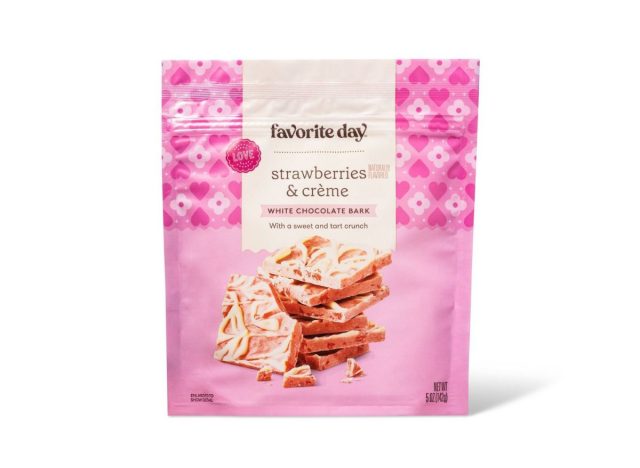
Filled with saturated fat, corn syrup, and palm oil, these strawberry and cream barks from Target’s Favorite Day brand really aren’t much to write home about. With 16 grams of added sugar and 5 grams of saturated fat, you’re not doing your body any favors, either. Additionally, this bark contains Red Dye 40 as its main food coloring, so if you’re looking for red or pink candies for your loved one this season, try to find foods that have been colored naturally with ingredients like beet powder or pomegranate, both of which also supply your body with much-needed nutrients.
- Source: Miller, M.D., Steinmaus, C., Golub, M.S. et al. Potential impacts of synthetic food dyes on activity and attention in children: a review of the human and animal evidence. Environ Health 21, 45 (2022). https://doi.org/10.1186/s12940-022-00849-9
- Source: Grigoryan H, Edmands WMB, Lan Q, Carlsson H, Vermeulen R, Zhang L, Yin SN, Li GL, Smith MT, Rothman N, Rappaport SM. Adductomic signatures of benzene exposure provide insights into cancer induction. Carcinogenesis. 2018 May 3;39(5):661-668. doi: 10.1093/carcin/bgy042. PMID: 29538615; PMCID: PMC5932554.
- Source: Rolls BJ. What is the role of portion control in weight management? Int J Obes (Lond). 2014 Jul;38 Suppl 1(Suppl 1):S1-8. doi: 10.1038/ijo.2014.82. PMID: 25033958; PMCID: PMC4105579.
- Source: Mayer-Davis E, Leidy H, Mattes R, Naimi T, Novotny R, Schneeman B, Kingshipp BJ, Spill M, Cole NC, Butera G, Terry N, Obbagy J. Added Sugars Consumption and Risk of Cardiovascular Disease: A Systematic Review [Internet]. Alexandria (VA): USDA Nutrition Evidence Systematic Review; 2020 Jul. PMID: 35353466.
- Source: Ameur FZ, Mehedi N, Soler Rivas C, Gonzalez A, Kheroua O, Saidi D. Effect of tartrazine on digestive enzymatic activities: in vivo and in vitro studies. Toxicol Res. 2019 Nov 21;36(2):159-166. doi: 10.1007/s43188-019-00023-3. PMID: 32257928; PMCID: PMC7099100.
- Source: Saturated fat. (2023c, May 10). www.heart.org. https://www.heart.org/en/healthy-living/healthy-eating/eat-smart/fats/saturated-fats
- Source: Hetherington MM, Blundell-Birtill P, Caton SJ, Cecil JE, Evans CE, Rolls BJ, Tang T. Understanding the science of portion control and the art of downsizing. Proc Nutr Soc. 2018 Aug;77(3):347-355. doi: 10.1017/S0029665118000435. Epub 2018 May 24. PMID: 29792243; PMCID: PMC6088523.
- Source: FoodData Central. (n.d.-w). https://fdc.nal.usda.gov/fdc-app.html#/food-details/168837/nutrients
- Source: DiNicolantonio JJ, OKeefe JH. Added sugars drive coronary heart disease via insulin resistance and hyperinsulinaemia: a new paradigm. Open Heart. 2017 Nov 29;4(2):e000729. doi: 10.1136/openhrt-2017-000729. PMID: 29225905; PMCID: PMC5708308.









